Table of Contents
Ever dreamt of seeing your art inked onto skin? The world of tattoo artistry is calling, and it all starts with mastering the art of drawing tattoo designs. Whether you're an aspiring tattoo artist or simply a creative soul with a passion for body art, this guide is your first step toward turning those visions into reality.
Finding Inspiration for Your Tattoo Drawing Designs
Finding Inspiration for Your Tattoo Drawing Designs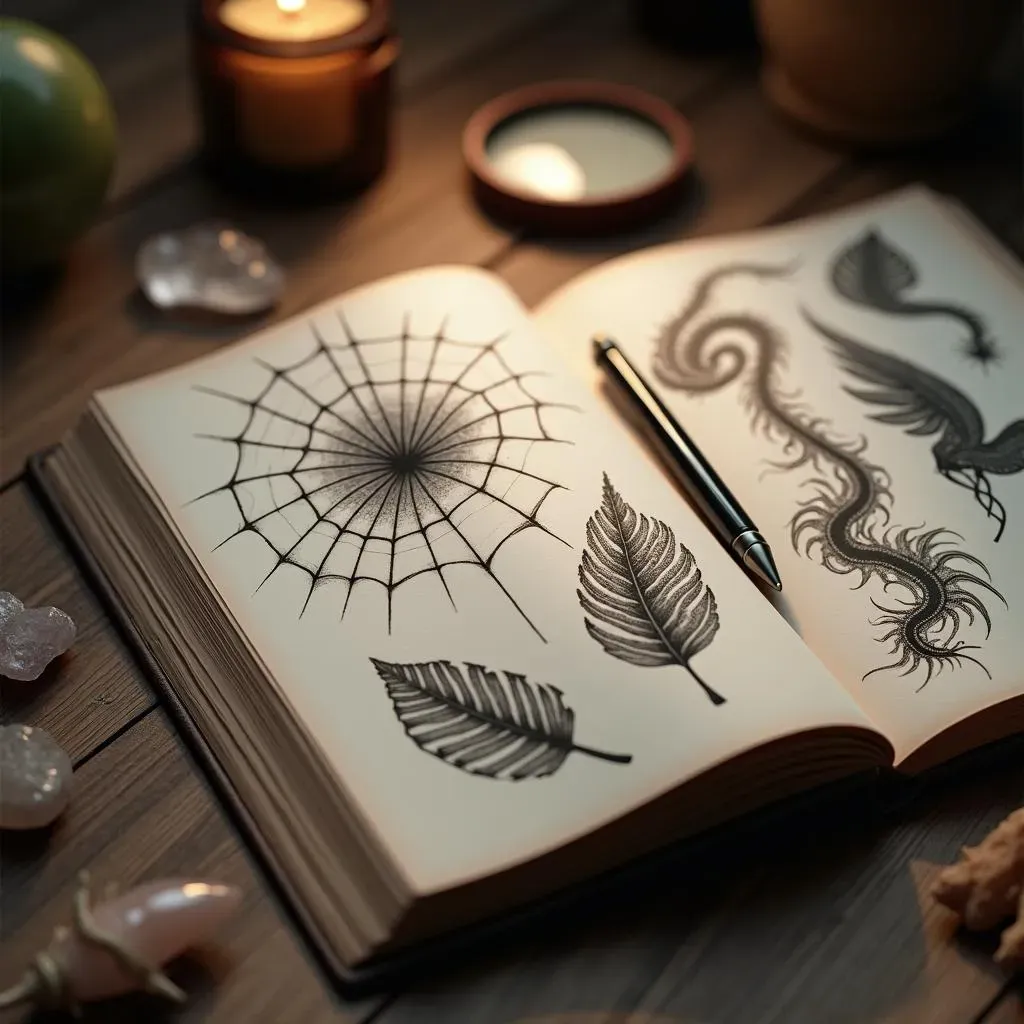
Staring at a blank page, ready to design your next tattoo masterpiece? Inspiration is everywhere, you just need to know where to look. Don't limit yourself to tattoo magazines or online galleries. Instead, open your eyes to the world around you. Nature is a fantastic starting point. The delicate veins of a leaf, the powerful symmetry of a spiderweb, the chaotic beauty of a storm cloud – all of these can be translated into stunning tattoo designs. Think about incorporating elements like flowers, animals, landscapes, or even celestial bodies into your work.
Essential Tools and Techniques for Drawing Tattoo Designs
Essential Tools and Techniques for Drawing Tattoo Designs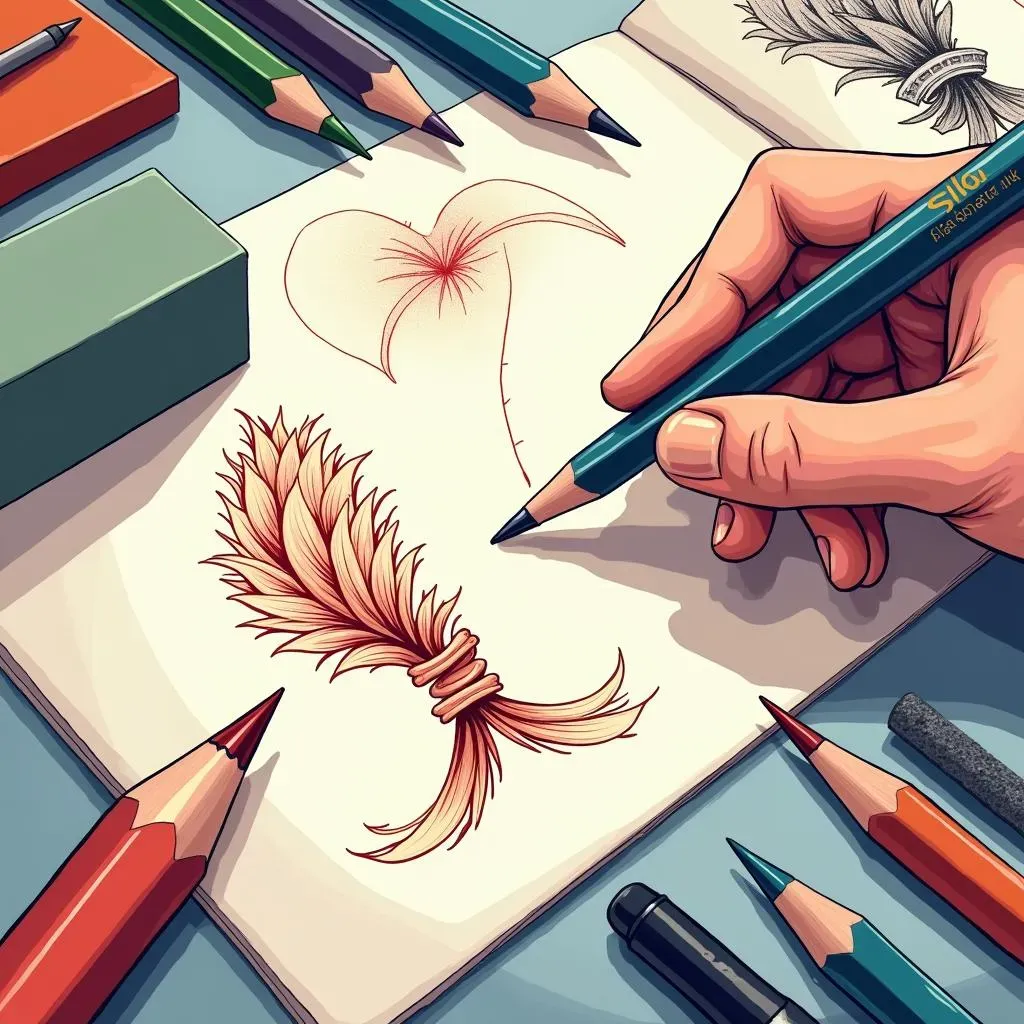
Gathering Your Arsenal: Must-Have Drawing Tools
Alright, let's talk tools! You don't need to break the bank to get started, but having the right equipment can make a world of difference. My go-to for initial sketches is a simple mechanical pencil with a range of lead hardnesses (HB, 2B, 4B). This allows you to create both light, erasable guidelines and bolder, darker lines. For outlining and adding detail, invest in a set of fine-liner pens with varying nib sizes. Brands like Micron or Staedtler are reliable choices. And don't forget a good eraser – a kneaded eraser is perfect for lifting graphite without damaging the paper.
Paper-wise, I recommend starting with a smooth Bristol board. It's durable enough to withstand multiple layers of ink and erasures. If you're planning on using markers or watercolors, opt for a thicker mixed media paper. And if you are leaning toward digital drawing, a graphic tablet like a Wacom or Huion can be a game-changer, offering pressure sensitivity and a wide range of digital brushes.
Mastering the Fundamentals: Linework, Shading, and Composition
Now that you've got your tools, let's dive into the techniques that will elevate your drawing tattoo designs. Linework is the foundation of any great tattoo, so practice creating clean, consistent lines with varying thicknesses. Experiment with different line weights to add depth and dimension to your designs. Shading is another crucial element. Learn how to use hatching, cross-hatching, and stippling to create realistic shadows and highlights. Understanding light and shadow will make your designs pop and give them a three-dimensional feel.
Composition is key to creating visually appealing tattoos. Think about the placement of your elements, the balance of positive and negative space, and the overall flow of the design. Consider how the tattoo will interact with the body's natural curves and contours. A well-composed tattoo will not only look beautiful but also complement the wearer's anatomy.
Digital vs. Traditional: Finding Your Preferred Method
In today's world, you've got two main avenues for creating tattoo designs: traditional hand-drawing and digital illustration. Each has its own set of advantages and disadvantages. Traditional drawing offers a tactile, hands-on experience that many artists find creatively fulfilling. It allows for a more organic and spontaneous approach. However, it can be time-consuming, and mistakes can be difficult to correct.
Digital drawing, on the other hand, offers unparalleled flexibility and control. You can easily undo mistakes, experiment with different colors and effects, and create complex designs with ease. Digital tools also allow for seamless collaboration and sharing of your work. Ultimately, the best method depends on your personal preferences and workflow. I recommend experimenting with both to see which one resonates with you the most.
Method | Pros | Cons |
|---|---|---|
Traditional Drawing | Tactile, organic feel, spontaneous | Time-consuming, difficult to correct mistakes |
Digital Drawing | Flexible, easy to correct mistakes, versatile | Can feel less organic, requires software/hardware |
StepbyStep Guide to Creating Your First Tattoo Drawing Designs
StepbyStep Guide to Creating Your First Tattoo Drawing Designs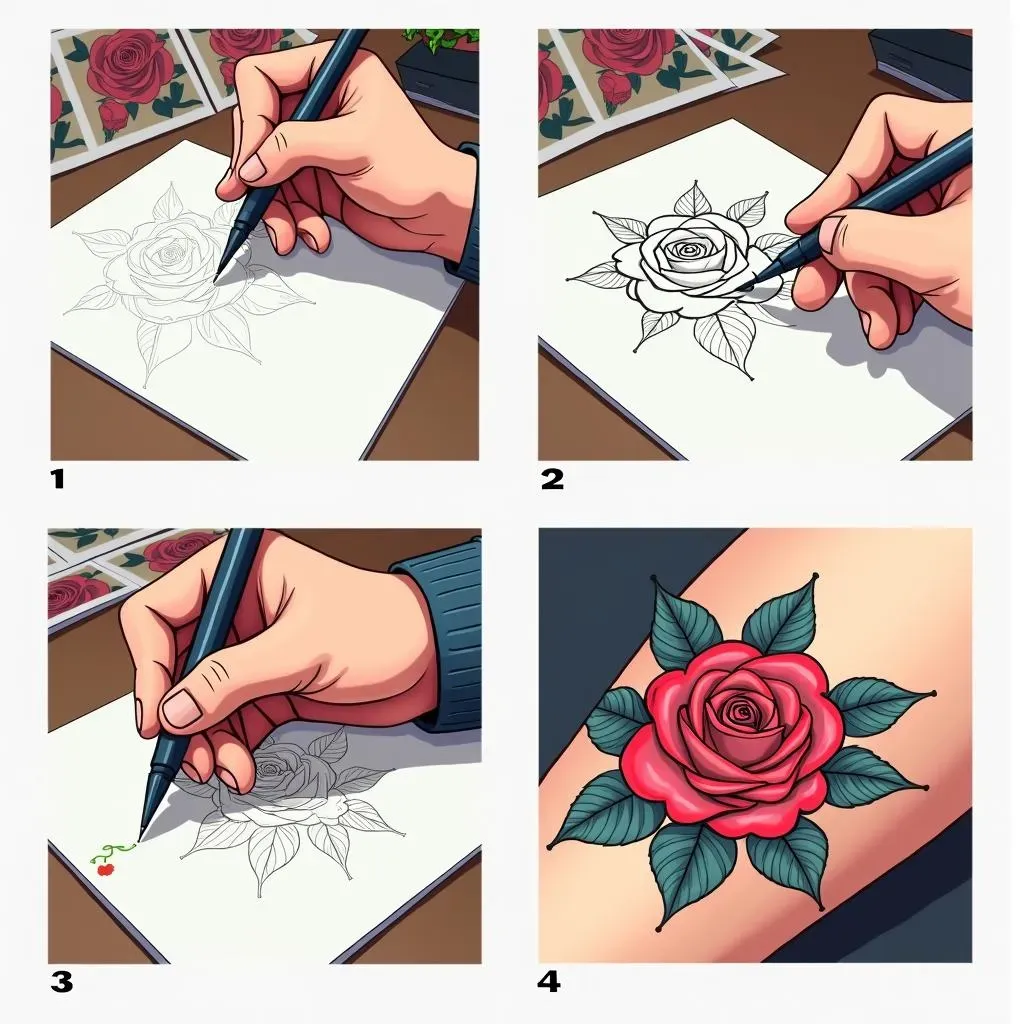
Alright, let's get practical and walk through the process of creating your first tattoo design. I always start with a concept. What's the theme? What message do you want to convey? Once you have a clear idea, do some research. Gather reference images of similar designs, elements you want to include, and different artistic styles that resonate with you. This will help you solidify your vision and avoid unintentional plagiarism.
Next, it's time to sketch. Start with a rough outline of your design, focusing on the overall composition and placement of the main elements. Don't worry about details at this stage. Once you're happy with the basic structure, start adding details and refining the linework. Use different line weights to create depth and dimension. Add shading to create contrast and highlight certain areas. Remember to consider the flow of the design and how it will interact with the body's natural curves.
Once you're satisfied with your sketch, it's time to ink it. If you're working traditionally, use fine-liner pens to create clean, crisp lines. If you're working digitally, use a stylus and graphic tablet to trace over your sketch. Take your time and pay attention to detail. A well-executed linework is essential for a great-looking tattoo. Finally, add any additional details, such as color or texture. And there you have it – your first tattoo design! Remember, practice makes perfect, so don't be discouraged if your first attempt isn't a masterpiece. Keep experimenting and refining your skills, and you'll be creating stunning tattoos in no time.
Step | Description |
|---|---|
1. Concept & Research | Define your theme, gather reference images. |
2. Sketching | Create a rough outline, then add details. |
3. Inking | Refine linework with pens or digital tools. |
4. Detailing | Add color, texture, and final touches. |
Mastering Different Tattoo Styles and Drawing Techniques
Mastering Different Tattoo Styles and Drawing Techniques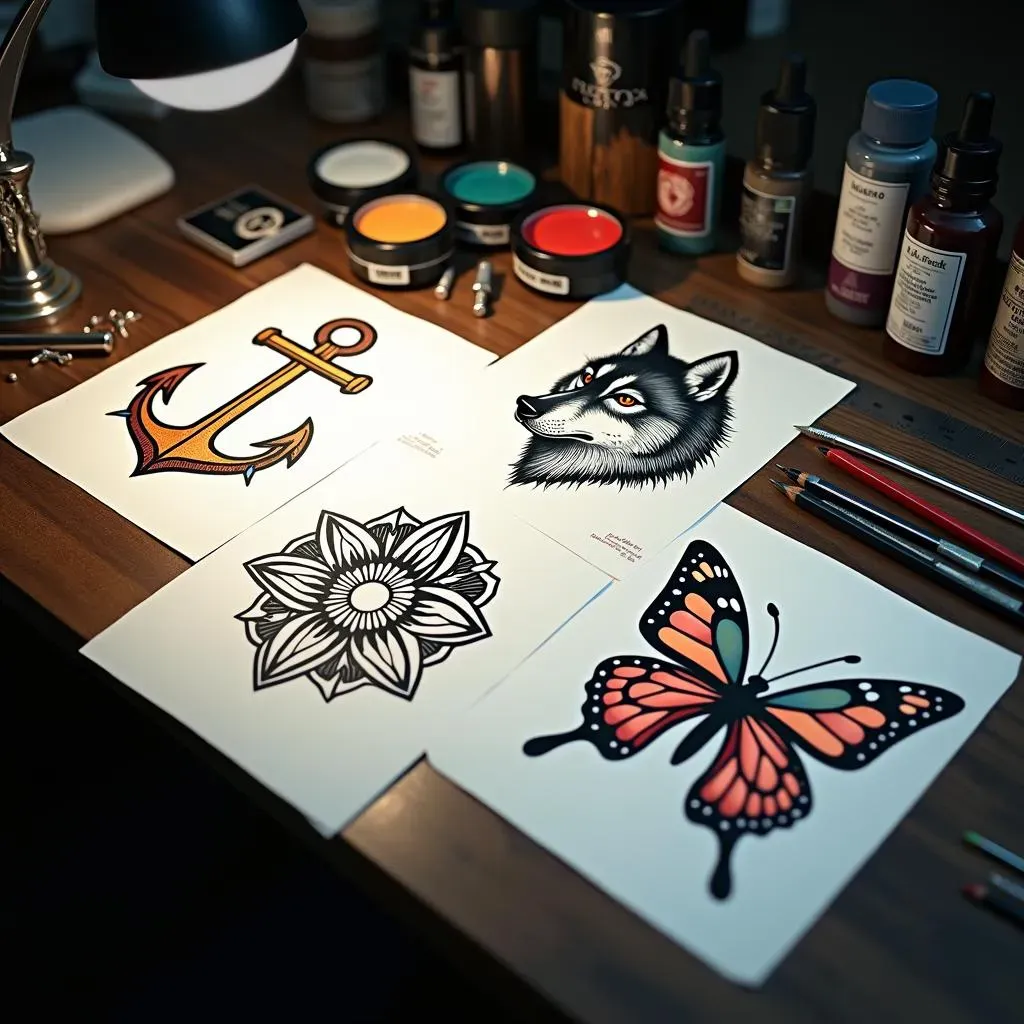
Exploring the Tattoo Style Spectrum
so you've got the basics down. Now comes the really fun part: diving into the amazing world of tattoo styles! Each style has its own unique history, aesthetic, and set of techniques. Traditional tattoos, also known as "old school," are characterized by bold outlines, simple color palettes, and classic imagery like anchors, roses, and eagles. Neo-traditional is a modern take on this style, incorporating more detail, shading, and a wider range of colors.
Then you have realism, which aims to replicate photographs or real-life subjects with incredible detail. This style requires a mastery of shading, perspective, and anatomy. Geometric tattoos utilize precise lines and shapes to create intricate patterns and designs. Watercolor tattoos mimic the look of watercolor paintings, with soft, blended colors and a dreamy, ethereal feel. And that's just scratching the surface! There are countless other styles to explore, like Japanese, tribal, blackwork, and illustrative.
Adapting Your Drawing for Different Ink Aesthetics
The key to mastering different tattoo styles is understanding how to adapt your drawing techniques to suit each aesthetic. For traditional tattoos, focus on creating bold, clean lines and using a limited color palette. Practice drawing classic imagery and simplifying complex shapes. For realism, hone your shading skills and pay close attention to detail. Study anatomy and perspective to create accurate and lifelike representations. Geometric tattoos require precision and accuracy. Use rulers, compasses, and stencils to create perfect lines and shapes.
When it comes to watercolor tattoos, experiment with blending colors and creating soft, diffused edges. Use light, airy strokes to mimic the look of watercolor paint. Don't be afraid to experiment and push the boundaries of each style. The best way to learn is by studying the work of master tattoo artists and practicing regularly. Try recreating existing tattoos in different styles to get a feel for the nuances of each one. And most importantly, have fun and let your creativity flow!
Tattoo Style | Key Characteristics | Drawing Techniques |
|---|---|---|
Traditional | Bold lines, simple colors, classic imagery | Focus on clean lines, limited palette, simplified shapes |
Realism | Photographic detail, accurate representation | Master shading, perspective, and anatomy |
Geometric | Precise lines and shapes, intricate patterns | Use rulers, compasses, and stencils for accuracy |
Watercolor | Soft colors, blended edges, ethereal feel | Experiment with blending, use light, airy strokes |
Tips for Perfecting Your Tattoo Drawing Designs and Portfolio
Tips for Perfecting Your Tattoo Drawing Designs and Portfolio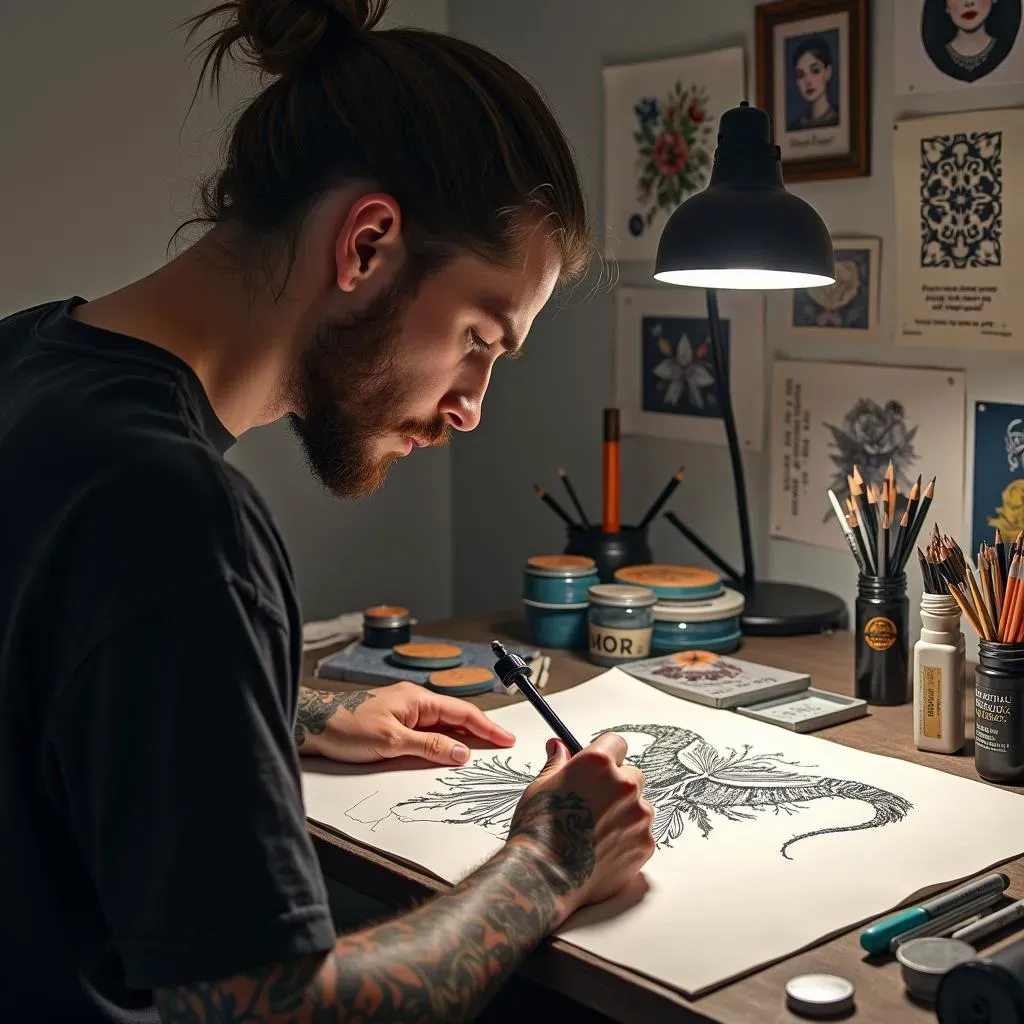
Refining Your Craft: Feedback, Practice, and Experimentation
you've got some designs under your belt – that's awesome! But the journey doesn't stop there. To truly elevate your drawing tattoo designs, you need to embrace feedback, practice relentlessly, and never stop experimenting. Seek out constructive criticism from other artists, tattoo professionals, or even trusted friends. Be open to hearing what they have to say, even if it's not always easy. Their insights can help you identify areas for improvement that you might not have noticed yourself.
Practice is absolutely crucial. Set aside time each day or week to dedicate to drawing. Don't just focus on creating finished pieces – experiment with different techniques, styles, and subject matter. Try drawing things that are outside of your comfort zone. The more you practice, the more confident and skilled you'll become. And don't be afraid to experiment! Try new tools, techniques, and styles. Push the boundaries of your creativity and see what you can come up with. You might just discover your next signature style.
Building a Knockout Portfolio: Showcasing Your Best Work
Your portfolio is your calling card. It's what potential clients and employers will use to judge your skills and abilities. So, it's essential to put together a portfolio that showcases your best work and accurately reflects your style and expertise. Start by selecting your strongest pieces – the ones that you're most proud of and that best represent your skills. Include a variety of styles and subject matter to demonstrate your versatility. Quality over quantity is key here. It's better to have a small portfolio of exceptional work than a large portfolio of mediocre pieces.
Present your work in a professional and visually appealing manner. If you're creating a physical portfolio, use high-quality paper and binding. If you're creating a digital portfolio, make sure your images are well-lit, properly cropped, and optimized for web viewing. Include a brief description of each piece, highlighting the techniques you used and the inspiration behind the design. And don't forget to include your contact information! Make it easy for people to get in touch with you if they're interested in commissioning your work.
Portfolio Tip | Description |
|---|---|
Showcase Best Work | Select your strongest designs that represent your skills. |
Variety | Include different styles and subjects to demonstrate versatility. |
Professional Presentation | Use high-quality materials or optimized digital images. |
Descriptions | Briefly explain techniques and inspiration for each piece. |
The Final Mark: Bringing Your Tattoo Drawing Designs to Life
Congratulations, you've journeyed through the essentials of drawing tattoo designs! From sparking your imagination to mastering diverse techniques and styles, you're now equipped to create unique and compelling body art. Remember, the key is consistent practice, relentless experimentation, and a deep respect for the craft. Whether you aspire to become a professional tattoo artist or simply want to explore your creative potential, keep honing your skills, stay inspired, and never stop pushing the boundaries of your artistic vision. The world of tattoo art awaits your unique mark!